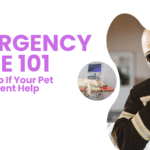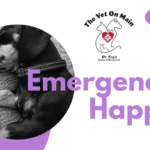Your pet’s diet is the foundation of their health, happiness, and longevity. The food they eat affects their energy levels, coat condition, immunity, and even their behavior. But with countless choices available, from dry kibble to raw food, it can be overwhelming to decide what’s best for your furry friend.
This guide will walk you through everything you need to know about choosing the perfect diet for your pet, whether you’re feeding an energetic Labrador, a picky Persian cat, or anything in between. By the end, you’ll feel confident enough to provide a diet that supports your pet’s overall well-being.
Why Choosing the Right Diet Matters
Feeding your pet isn’t just about scooping kibble into their bowl. It’s about ensuring they get the right nutrients to thrive. Poor diet choices can lead to obesity, allergies, digestive issues, and long-term health conditions.
Investing in your pet’s diet now can save you trips to the vet later. A well-balanced diet complements routine pet wellness checkups and vaccinations, helping your pet stay healthy year-round. Think about this as part of holistic pet care.
Understanding Your Pet’s Nutritional Needs
Every pet is unique, and so are their dietary requirements. A one-size-fits-all approach to pet food doesn’t work. Here’s what to consider:
1. Age
- Puppies and Kittens need nutrient-dense food to support their rapid growth. Look for options labeled as “growth” formulas.
- Adult Dogs and Cats need a maintenance diet with balanced carbs, protein, and fats.
- Senior Pets benefit from food that may be lower in calories but enriched with joint-supporting ingredients like glucosamine.
2. Breed
- Large breeds like Golden Retrievers often have specific needs related to joint health and are prone to obesity.
- Small breeds may need calorie-dense food due to their higher metabolic rates.
For personalized guidance, consider a consultation with THE VET ON MAIN.
3. Activity Level
- Highly active pets, such as working dogs or cats that love to roam outdoors, require higher protein intake.
- Sedentary pets need lower-calorie diets to prevent weight gain.
Types of Pet Food
Pet food comes in various forms, and understanding the pros and cons of each can help you make an informed decision.
1. Dry Food (Kibble)
- Pros: Convenient, shelf-stable, and more affordable.
- Cons: Lower water content; choose brands with minimal fillers.
2. Wet Food
- Pros: High moisture content, making it ideal for pets prone to dehydration.
- Cons: Expensive, with a shorter shelf life once opened.
3. Raw Food
- Pros: Mimics what pets eat in the wild, packed with protein.
- Cons: Risk of pathogens; requires careful handling.
4. Homemade Food
- Pros: Fully customizable to your pet’s needs.
- Cons: Often lacks essential nutrients unless carefully balanced.
Pro Tip: If you’re considering raw or homemade food, ensure it’s safe and balanced by consulting TVOM.
Reading Pet Food Labels
Pet food labels can be tricky to decode. Here’s what to look for:
- Ingredients: Look for real meat as the first ingredient
- Myth #1: Grain-Free is Always Better, FALSE!
We do not recommend grain-free diets. Most pets digest grains like rice, oats, and barley just fine. Grains provide energy, fiber, and key nutrients and true grain allergies are very rare. According to studies conducted by veterinary dermatologists, animal proteins and dairy are far more likely to cause allergic reactions than grains.. - Nutritional Adequacy Statement: Ensure the food meets the Association of American Feed Control Officials (AAFCO) standards.
- Additives: Avoid artificial colors, flavors, and preservatives.
If you’re unsure, Contact THE VET ON MAIN to help you choose a brand that aligns with your pet’s individual needs.
Addressing Common Dietary Concerns and Allergies
Like humans, pets can have food sensitivities or allergies. Common triggers include chicken, beef, dairy, and wheat. Symptoms might include:
- Itchy skin
- Chronic ear infections
- Soft stool or diarrhea
Switching to hypoallergenic or limited-ingredient diets can help alleviate these symptoms. Consult with an emergency vet or veterinary services near you if symptoms persist.
Transitioning Your Pet to a New Diet
Pets can be sensitive to sudden dietary changes. Follow these steps for a smooth transition:
- Start Slow: Mix 25% of the new food with 75% of the old food.
- Gradually Increase the proportion of the new food over 7–10 days.
- Monitor for Reactions like vomiting, diarrhea, or reduced appetite.
Remember, patience is key!
Debunking Common Myths About Pet Food
There’s a lot of misinformation about pet diets. Here’s the truth behind some common myths:
- Myth #1: Grain-free diets are always better.
Truth: Many pets digest grains just fine, and grain-free is only essential for pets with specific allergies.
- Myth #2: By-products in pet food are harmful.
Truth: High-quality by-products like liver can be nutritious. Low-quality fillers, however, should be avoided.
- Myth #3: Pets can’t eat human food at all.
Truth: While many human foods are unsafe, cooked plain meat, carrots, and apples can be healthy treats.
DIY Pet Food Recipes
Homemade meals can be a great way to take control of your pet’s nutrition but it’s essential to ensure they’re getting all the nutrients they need.
We recommend Balance.it for trusted, vet-approved DIY pet food recipes that help you create balanced, healthy meals.
Investing in Your Pet’s Long-Term Health
At the end of the day, a healthy pet is a happy pet. By investing time and effort into choosing the perfect diet, you’ll be contributing to their long-term well-being. Pair this with regular checkups, pet vaccinations, and other preventative measures to give your pet the best life possible.
If you’re ready to take the next step, schedule an appointment with your local veterinary services or pet care expert. Your four-legged family member will thank you for it!






